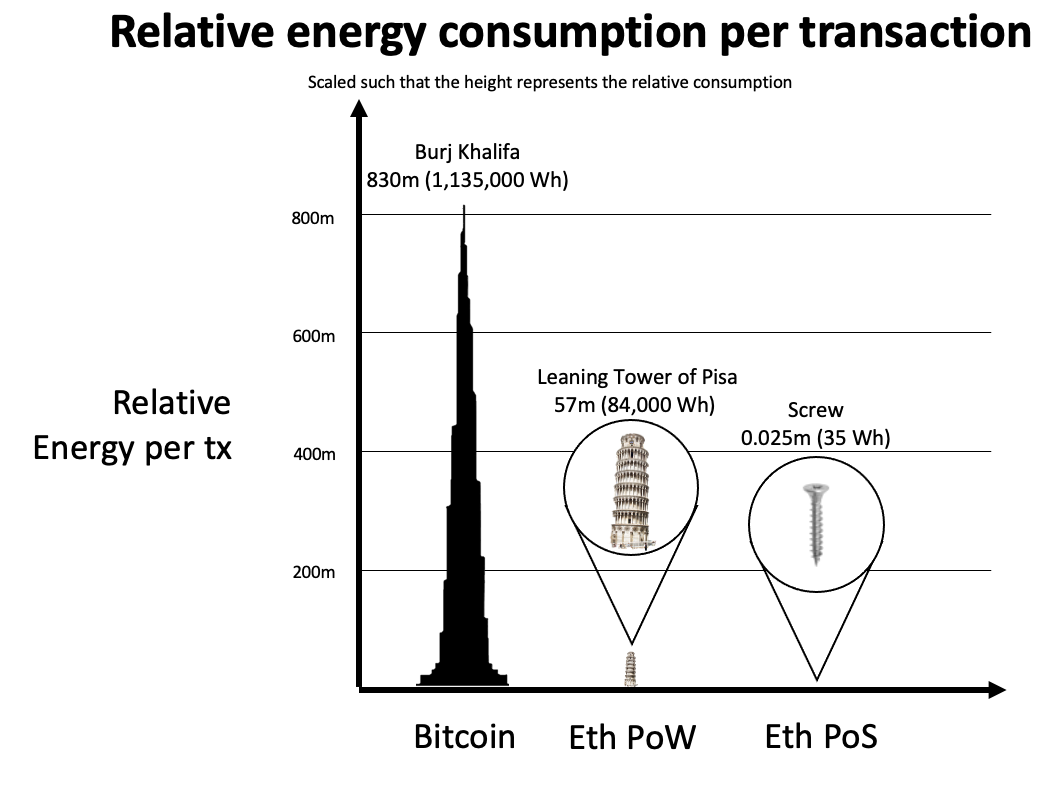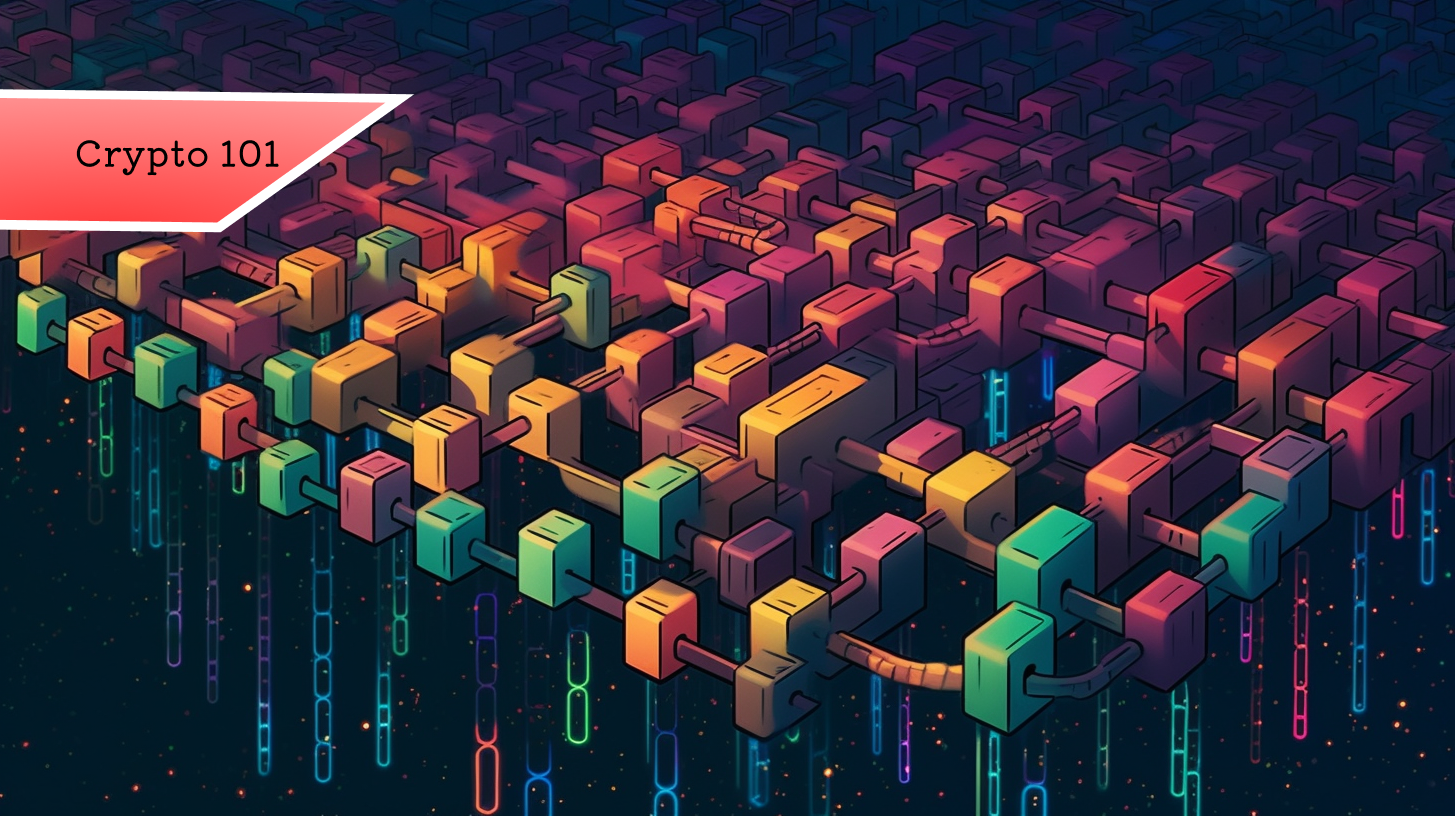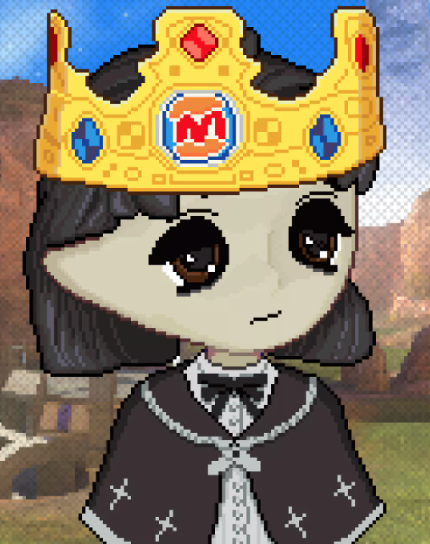Key Takeaways:
- In general, blockchains are decentralized records of transactions
- There are different types of blockchains
- Blockchain is not just for crypto
Are you curious about what a blockchain is but find the concept overwhelming? Don’t worry - you aren’t alone. In this piece we’ll explore a quick overview of all things blockchain - what it is, how it works, the history of the tech and even concerns regarding energy usage. Let’s dive in and demystify this digital revolution dubbed blockchain.

So... What exactly is a blockchain?
Imagine a digital ledger, similar to a notebook, where you record all your transactions. Now, picture this ledger being shared with multiple people, each having an identical copy. Whenever a new transaction is made, it is added to everyone’s ledger. This shared digital ledger is the essence of a blockchain. In other words, a blockchain is a decentralized/distributed digital ledger used to record transactions across multiple computers in a secure and tamper-proof manner. The key here is decentralization, preventing any single actor from manipulating the chain while also allowing transparency throughout.
A blockchain consists of a chain of “blocks,” with each block containing a list of transactions. Once a block is filled with transactions, it is cryptographically sealed and linked to the previous block, forming a chain. This process happens automatically without the need for any human intervention, creating a trustless environment. Take the Bitcoin blockchain, for example: Launched in 2008, it could potentially continue operating until the end of time, as long as there are a handful of computers still running it in the world.
You may have heard of blockchains being referred to as “networks” or simply “chains”. Some popular blockchains include Bitcoin, Ethereum, Polkadot, XRP, Cardano, Solana, and Cosmos. All of these blockhains are slightly different from one another, each serving a specific use-case. For example, since not all blockchains are compatible with one another, projects like Polkadot and Cosmos focus on interchain communication. On the other hand, Solana focuses on a totally different set of use-cases like retail utility and web3 gaming while Ethereum is building decentralized finance tools and empowering data ownership.
Okay, but why do we need blockchains?
Let's be real. The world doesn’t necessarily need blockchains, in the same way that we don’t really need the internet. We may be able to technically survive without them (both the internet and blockchains), but each one’s existence undoubtedly makes life much easier for everyone in society. But how?
The decentralized and transparent nature of blockchains allow for many unexplored use-cases like supply chain management, identity verification, voting systems, and of course financial services.
Imagine a world where you can verify your identity online without giving up a picture of your ID card. This may seem trivial to you, but to someone who had their identity stolen, this is a gift from the gods! Or voting systems - blockchains can enable transparent and tamper-proof voting systems, eliminating any remnants of voter fraud.
Another use-case currently being explored is enabling companies to track products from their origin to the end consumer, ensuring quality and reducing fraud. Want to know if something is organic, or ethically sourced? You can verify on-chain that your product was indeed grown organically or sourced ethically. By keeping track of the logistics on-chain, companies will be able to verify and prove to consumers that what they are advertising is in fact true.
Where did blockchains come from?
Although the idea of blockchains has been around for a while, the term “blockchain” started to gain prominence in 2008 when an anonymous person (or group 🧐) using the pseudonym Satoshi Nakamoto published the Bitcoin white paper. This paper proposed a decentralized digital currency (Bitcoin), that did not require a central authority and used a secure, distributed ledger system.
In 2008, Satoshi mined the first block of the Bitcoin blockchain, known as the “Genesis Block”. This marked the beginning of the Bitcoin network and the first practical implementation of blockchain technology.
Innovation took off. Ethereum was created, introducing smart contracts and decentralized applications, eventually leading to the proliferation of thousands of networks over the past 15 years. Some blockchains are “layered” and built onto Ethereum, while others have started from scratch and built their own blockchain networks. The rest is history!
But what about the environmental concerns?
One significant concern surrounding blockchain technology is its current energy consumption. Cryptocurrencies like Bitcoin use a consensus algorithm called Proof-of-Work (PoW), which requires miners to solve complex mathematical problems to validate transactions before adding them to the blockchain. This process consumes a significant amount of energy and has raised concerns about its environmental impact.
To address these concerns, alternative blockchain algorithms have been developed, such as Proof-of-Stake (PoS), which consumes far less energy. Ethereum, the second-largest cryptocurrency, successfully transitioned from PoW to PoS in 2022 in order to reduce its energy consumption.
Over time, communities have formed around each consensus algorithm. Although exact numbers are debated til this day, it’s generally accepted that Proof-of-Stake (PoS) uses up to 99.9% less energy than Proof-of-Work.
There are other consensus algorithms currently being developed such as “Proof-of-Time” and “Proof-of-Liquidity” which each address their own set of problems. But Proof-of-Work and Proof-of-Stake remain the two most frequently used consensus algorithms.

In closing
Blockchain technology has the potential to revolutionize various industries and reshape the way we conduct transactions. Its decentralized, transparent, and secure nature makes it an appealing solution for many real-world problems. As we continue to explore its applications and address concerns such as energy consumption, we hope to see blockchain technology playing an increasingly vital role in our digital future.
Remember, this is just a beginner’s launchpad to help you understand blockchain technology. The best way to learn more is to dive deeper into each topic and explore additional resources, such as articles, videos, and podcasts. The world of blockchain is vast and exciting, and there’s always more to learn. If you'd like to see more beginner articles in this series, make sure to follow us on Twitter or join our Discord. Happy exploring!

